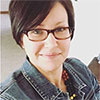I live in a sundown town.
I’ll admit, I’d never heard that term until college. But it’s stuck with me since my husband attended a talk by author James Loewen, author of Lies My Teacher Told Me and Sundown Towns: A Hidden Dimension of American Racism.
The gist is that though northern states were not as overt in racial segregation as the southern states, there were still places that, if you were black, you were not welcome. Some towns posted signs to the effect of “Don’t let the sun set on you here,” meaning those “unwanted” folks had better clear out before dark, or else.
The spread of this rule relied heavily on oral tradition, though some towns had official ordinances on their books. Consequences included threats of physical violence, damage to property, and/or police action to those in noncompliance.
I read that the sundown town sign in my small, rural, southern Illinois town was up until the past decade or so, when it was removed to accommodate a public works project and was not replaced after the work was completed. And I recently heard a story retold by a member of our church about a former pastor in the 1950s bringing home a black friend from seminary and the pastor’s experience of having to explain to his guest why he had to stay inside his host’s home after dark.
As a point of fact, there are not many African-American residents in my town or surrounding towns to this day. That a sign like this could exist for so long in a majority Christian town proves how insidious racism can be–it’s there without even realizing it, sometimes a part of the local tradition.
This election season, I hear a lot of people yearning to return to the “good old days.” I’m not sure what that means. Americans have a poor collective memory, cycling through every 4 years or so when election time rolls around. This clip from NPR helps illustrate my point: life was most certainly not better for most people 100 years ago, or even 50 years ago, in regards to issues like wages, health, and labor laws. I’m confronted with the idea that people want to turn back the clock on the progress we’ve made, though small, on race and gender relations in favor of a time when things were somehow in their minds better or simpler.
Are we living with a modern-day sundown town mindset? Instead of engaging with those different from us, do we build walls and legislate rules to keep others out? Do we do this in the name of simplicity, or of fear and misunderstanding, or even worse, religion?
I don’t want to live in a sundown town, by law or by attitude. I struggle to imagine what it would be like to be made to feel so unwelcome or even threatened anywhere in this country because of the color of my skin.
But just because I can’t imagine it doesn’t mean it doesn’t happen. Being a woman, I already have a sense of the danger that can happen after dark, or any time for that matter. As a person of faith, I work and pray for the sun to shine on all of us.
Find out if your town is a sundown town here: Sundown Towns in the United States.
 About Christina Krost
About Christina Krost
Christina Krost is a wife, mother, and earth care advocate. She works for Faith in Place, an interfaith non-profit. She lives with her husband and three young daughters in rural central Illinois and blogs at 5matches.com. Her work has been in Brain, Child Magazine, ForEveryMom.com, and a 2015 anthology called Precious, Precocious Moments (Grace Publishing).
Leave a Reply